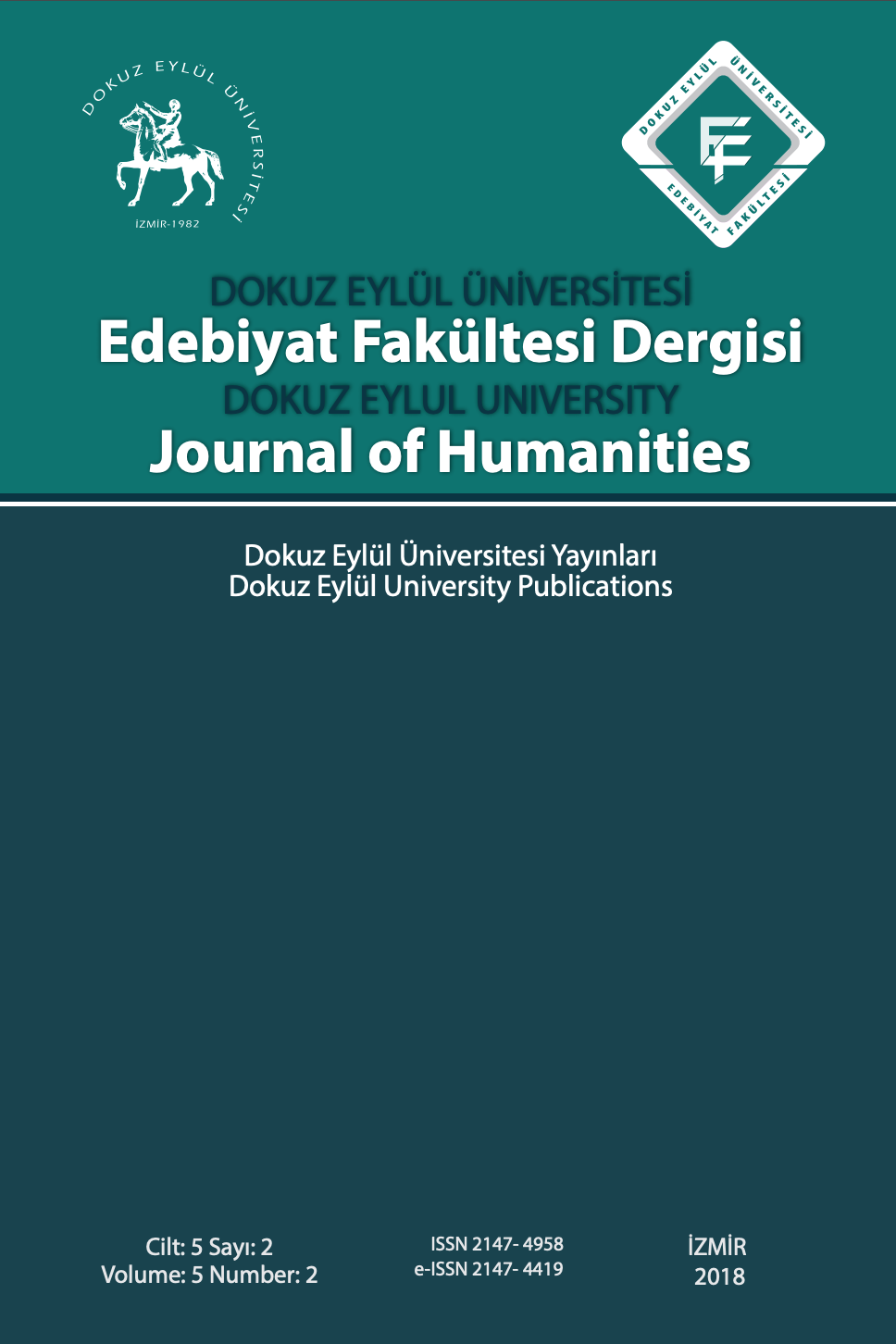PANDEMONIUM’DA TANRIYI OYNAYAN VAİZLER
İnsan üstü, İnsan ötesi, Panteizm, Distopya, Bilim, Teknoloji, Destrüksiyon, Tanrı
ORATORS IN THE REALM OF PANDEMONIUM PLAYING GOD
Post-human, Transhumanism, Pantheism, Dystopia, Science, Technology, Destruction, God,
___
- Reference 1 Atsma, A. J. (n.d.). Dionysus, http://www.theoi.com/Olympios/Dionysos.html [accessed 18 February 2017].
- Reference 2 Bernheimer, R., (1979). Wild men in the Middle Ages. Cambridge: Harvard University Press, 1952; New York: Octagon books, ISBN 0-374-90616-5.
- Reference 3 Bible hub, 1 John 2:15-17, https://biblehub.com/1_john/2-15.htm [accessed 10 June 2019].
- Reference 4 Bolter, J. D., (2016). Posthumanism, The International Encyclopedia of Communication Theory and Philosophy. JohnWiley & Sons, Inc. DOI: 10.1002/9781118766804.wbiect220
- Reference 5 Booker, M. K., (1994). Dystopian Literature A Theory and Research Guide. London: Greenwood Press.
- Reference 6 Bostrom, N., (2005). A History of Transhumanist Thought. Journal of Evolution and Technology ‐ (Vol. 14 Issue 1 ‐ April 2005) [Originally published in; reprinted (in its present slightly edited form) in Academic Writing Across the Disciplines, eds. Michael Rectenwald & Lisa Carl (New York: Pearson Longman, 2011)]
- Reference 7 Bostrom, N., (2003). Human Genetic Enhancements: A Transhumanist Perspective. Journal of Value Inquiry (2003, Vol. 37, No. 4, pp. 493-506).
- Reference 8 Columbus reports on his first voyage, (1493), A Spotlight on a Primary Source by Christopher Columbus, The Gilder Lehrman Institute of American History, https://www.gilderlehrman.org/content/columbus-reports-his-first-voyage-1493
- Reference 9 Freud, S., (1930). Civilization and its Discontents. https://www.gradesaver.com/civilization-and-its-discontents/study-guide/summary-chapters-5-6 [accessed 10 June 2019].
- Reference 10 Tolkien, J.R.R., (n.d.), On Fairy Stories, http://www.rivendellcommunity.org/Formation/Tolkien_On_Fairy_Stories.pdf [accessed January 2019].
- Reference 11 Zamiatin, Eugene, (1952). We. (Translated and with a Foreword by Gregory Zilboorg, Introduction by Peter Rudy, Preface by Marc Slonim), New York: BY E. P. DUTTON & CO., INC. (Copyright, 1924, Copyright renewal, 1952, By Gregory Zilboorg SBN 0-525-47039-5).
- ISSN: 2147-4958
- Yayın Aralığı: 2
- Başlangıç: 2011
- Yayıncı: Dokuz Eylul Üniversitesi Matbası
KAFKA’NIN “BİR KÖY DOKTORU” HİKÂYESİNDE TEKİNSİZ EVLER VE EVSİZLİK
MUGBY JUNCTION'DA DEMİRYOLLARI VE DEMİRYOLU ÇALIŞANLARI
İNGİLİZ VE HİNT EDEBİYATLARINDA GOTİK: OTRANTO ŞATOSU VE VETĀLAPAÑÇAVİṂŞATİ
OSMANLI DEVLETİ İLE KAZAK HANLIĞI ARASINDAKİ SİYASİ İLİŞKİLER (XVIII. yy)
JAPONCA VE TÜRKÇEDEKİ HAYRET İFADELERİ ÜZERİNE
Söylem, Söylem Çözümlemesi ve Eleştirel Söylem Çözümlemesi: Tanımları ve Kapsamları.
Gülsüm Songül ERCAN, Pınar DANIŞ
AYHAN BOZFIRAT’IN YAPITLARINDA SINIFSAL EŞİTSİZLİK VE ADALET İLİŞKİSİ
THALES VE ANAKSİMENES’İN GÜNÜMÜZDE UNUTULMUŞ ELEMENTLERİ: SU VE HAVA
